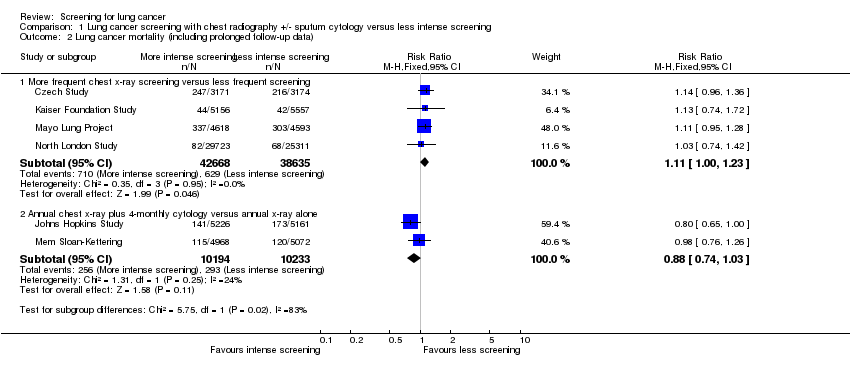Contenido relacionado
Revisiones y protocolos relacionados
Asha Bonney, Reem Malouf, Corynne Marchal, David Manners, Kwun M Fong, Henry M Marshall, Louis B Irving, Renée Manser | 3 agosto 2022
Mia Schmidt‐Hansen, David R Baldwin, Elise Hasler, Javier Zamora, Víctor Abraira, Marta Roqué i Figuls | 13 noviembre 2014
Quimioterapia para el cáncer de pulmón de células no pequeñas avanzado en pacientes de edad avanzada
Fábio N Santos, Tiago B de Castria, Marcelo RS Cruz, Rachel Riera | 20 octubre 2015
Roberto Ferrara, Martina Imbimbo, Reem Malouf, Sophie Paget-Bailly, François Calais, Corynne Marchal, Virginie Westeel | 30 abril 2021
Marcela Cortés‐Jofré, José‐Ramón Rueda, Claudia Asenjo‐Lobos, Eva Madrid, Xavier Bonfill Cosp | 4 marzo 2020
Maria FS Torres, Gustavo JM Porfírio, Alan PV Carvalho, Rachel Riera | 6 marzo 2019
Rosemary Stevens, Fergus Macbeth, Elizabeth Toy, Bernadette Coles, Jason F Lester | 14 enero 2015
Nick P Rowell, Chris Williams | 10 marzo 2015
Marta Pelayo Alvarez, Virginie Westeel, Marcela Cortés‐Jofré, Xavier Bonfill Cosp | 27 noviembre 2013
Sarah Burdett, Jean Pierre Pignon, Jayne Tierney, Helene Tribodet, Lesley Stewart, Cecile Le Pechoux, Anne Aupérin, Thierry Le Chevalier, Richard J Stephens, Rodrigo Arriagada, Julian PT Higgins, David H Johnson, Jan Van Meerbeeck, Mahesh KB Parmar, Robert L Souhami, Bengt Bergman, Jean‐Yves Douillard, Ariane Dunant, Chiaki Endo, David Girling, Harubumi Kato, Steven M Keller, Hideki Kimura, Aija Knuuttila, Ken Kodama, Ritsuko Komaki, Mark G Kris, Thomas Lad, Tommaso Mineo, Steven Piantadosi, Rafael Rosell, Giorgio Scagliotti, Lesley K Seymour, Frances A Shepherd, Richard Sylvester, Hirohito Tada, Fumihiro Tanaka, Valter Torri, David Waller, Ying Liang, for the Non‐Small Cell Lung Cancer Collaborative Group | 2 marzo 2015
Respuestas clínicas Cochrane
Jane Burch, John C Ruckdeschel | 13 marzo 2017












